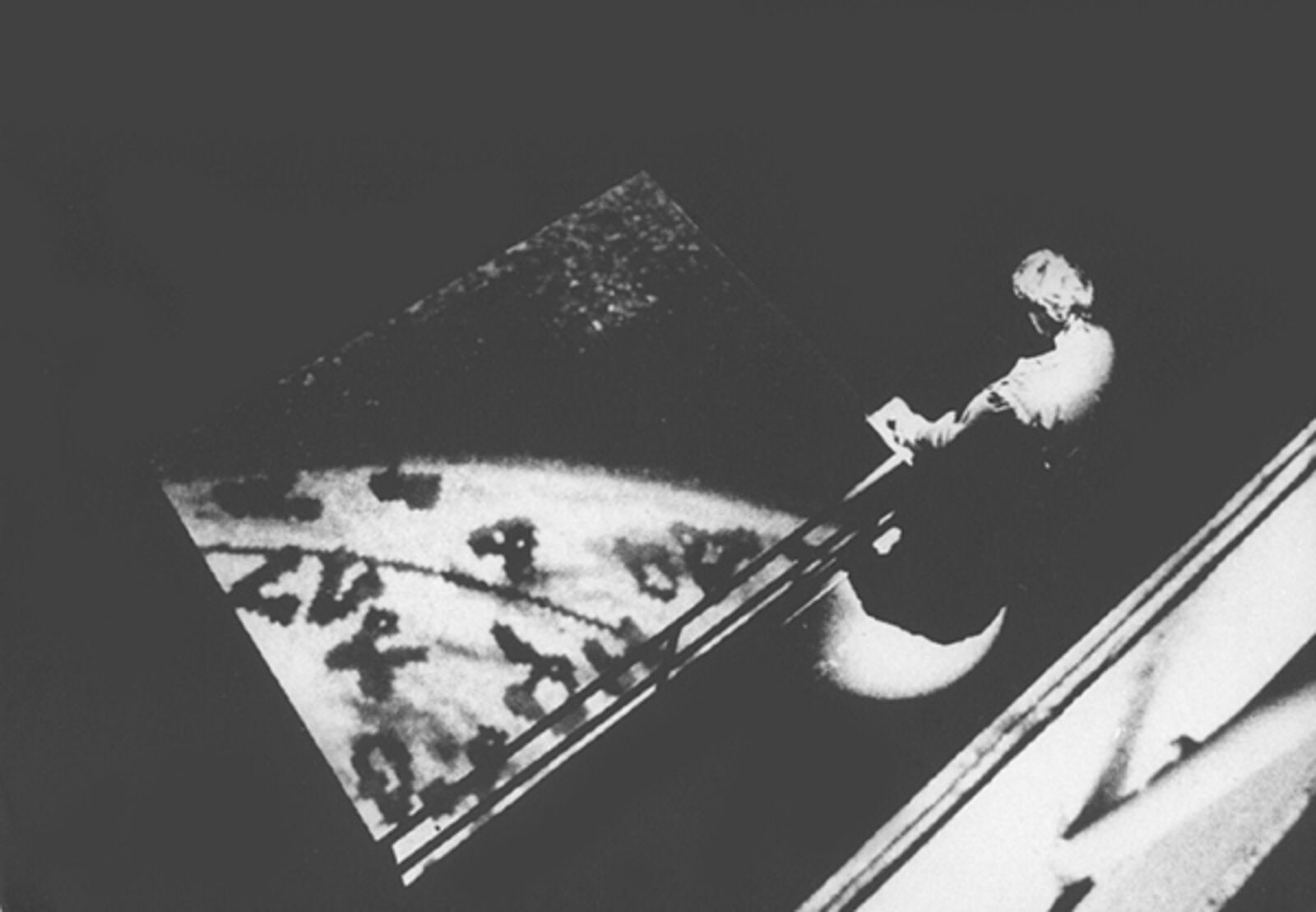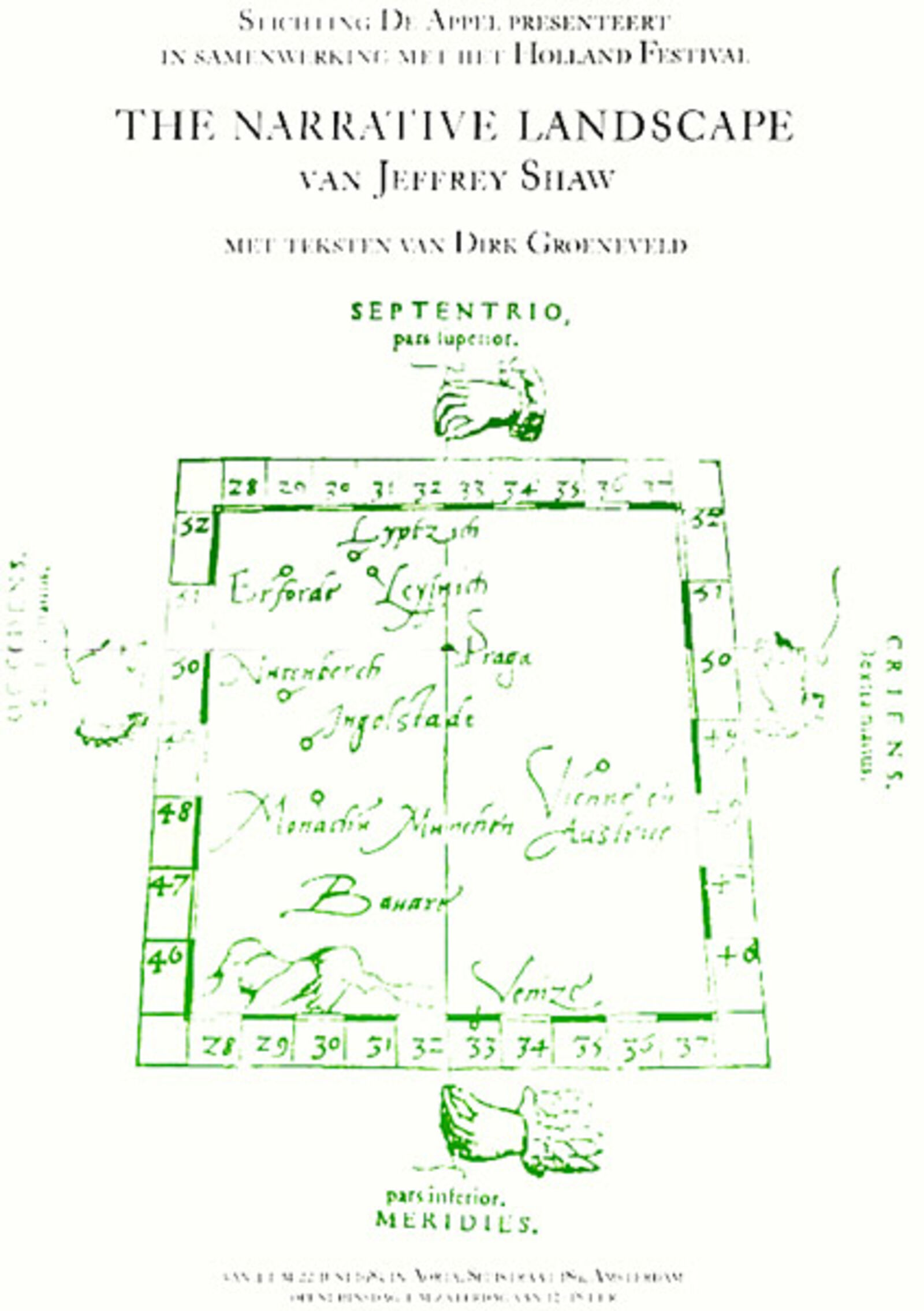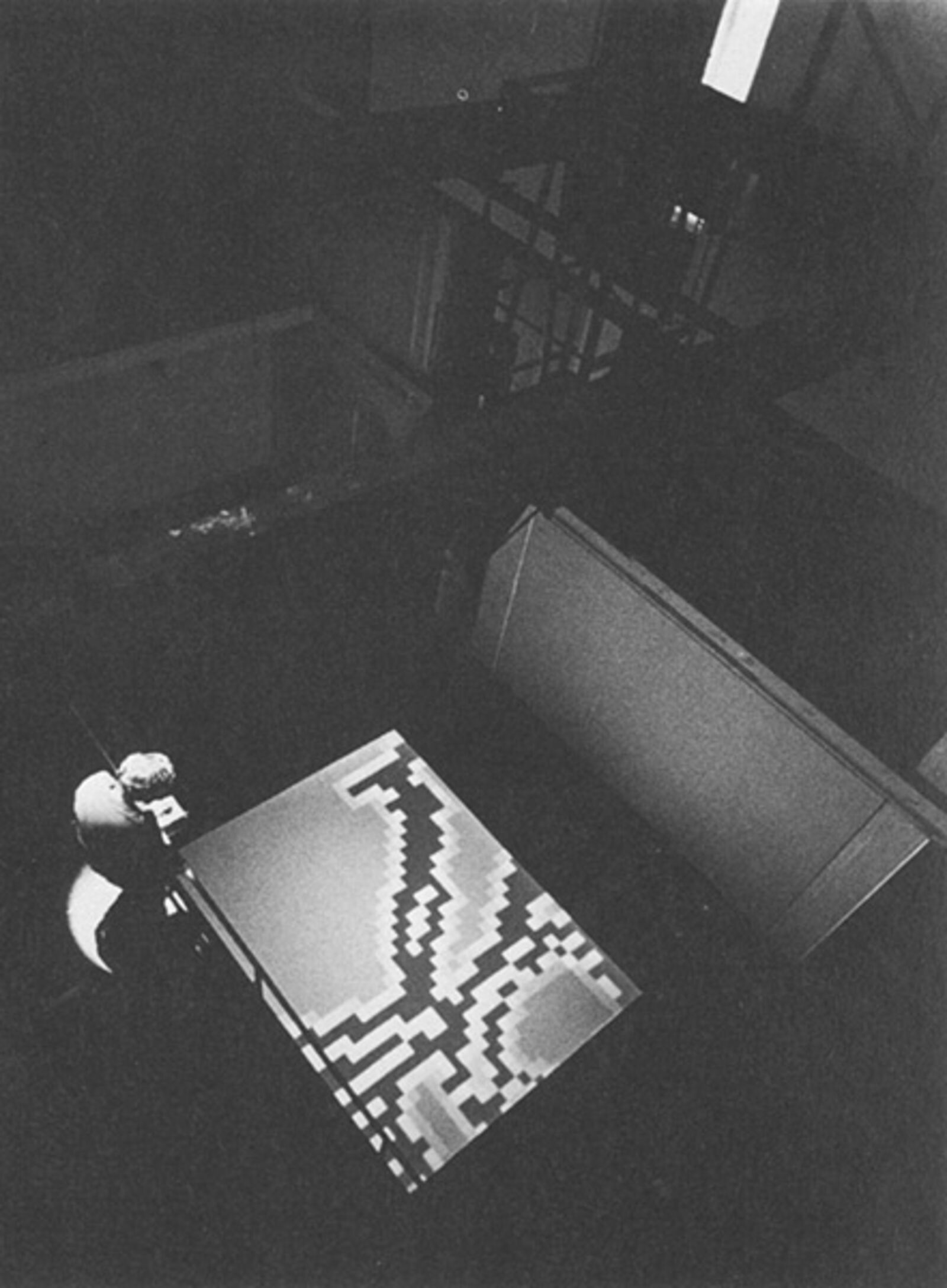Jeffrey Shaw "The Narrative Landscape"
04–22.06.1985
Aorta, Spuistraat 189, Amsterdam
Aorta, Spuistraat 189, Amsterdam

The Narrative Landscape III
© Oscar van Alphen, Amsterdam
© Oscar van Alphen, Amsterdam

Poster

The Narrative Landscape II
© Oscar van Alphen, Amsterdam
© Oscar van Alphen, Amsterdam

The Narrative Landscape I
© Oscar van Alphen, Amsterdam
© Oscar van Alphen, Amsterdam
From June 4 to 22, 1985, De Appel Foundation, in cooperation with the Holland Festival, will present Jeffrey Shaw’s The Narrative Landscape at Aorta, Spuistraat 189, Tuesday through Saturday from 1 to 6 pm. The Narrative Landscape, with texts by Dirk Groeneveld, is the next phase in a series of projects with the general name Points of View. Mickery provided support for the first two phases, and after this third phase will support the next instalment within the framework of Theater maken aan Televisie voorbij [Making theatre on television is over]. The project is scheduled for the ‘86/’87 season.
‘The Narrative Landscape is a work created with a computer that has been conceived and developed to articulate a new interactive artistic form. It allows the spectator to travel within a prepared digital database of images and sound, and so to make a personal scenography out of the process of viewing and listening to the work. The installation The Narrative Landscape consists of its computer hardware, a video projector which projects the digital image down into a large white screen (3m x 4m) on the floor of the gallery, and a joystick with which each spectator can manipulate sound and image. Both sound and image are digitally recorded in the computer, and the audio-visual output is controlled by the use of the joystick. The spoken text and other soundtracks are connected to specific images, and in some instances just to specific areas with in an image. The action of the joystick gives visual movement in two ways - panning over the surface of an image in any direction, and zooming which progressively enlarges or reduces a chosen part of an image. At the points of extreme zoom-in and zoom-out the joystick generates a transition to a new image; a process which represents the idea of 'zooming through' to an image on another level (i.e. above or below the former image). The Narrative Landscape is constituted by 28 images which are arranged in the following way: The first image is based on a satellite photo of the Earth over which has been superimposed an astrological map of the stars configured as Hebrew letters. This image is divided by a grid of red lines into nine areas, and each of these areas indicate the presence of an audio-visual ‘story’ which can be reached by zooming through the Earth image in that place. Each of the nine stories is articulated by a group of three images which are arranged one below the other. These are also reached by the process of zooming through from one level to the next. Zooming through the lowest level (i.e. the third image) of a story returns the viewer to the original Earth image, in the same place it was left. It is here that the viewer can then travel to another of the nine areas, and zoom through to another group of three images that make up a story.
The nine groups of three images have all been structured in the following way:
- the first and uppermost image represents a place - it has the scale of an aerial image of a city or landscape;
- the second and middle image indicates the body - it is a symbolic construction of the themes expressed in the first two images of place and body.
All the images in this work have been made with a computer and are digitally encoded. As a result, the action of zooming into an image is also a process of increasing abstraction because the points of the original image become increasingly larger squares of colour. The resulting transitions between varying levels of abstraction and representation are one of the important formal aspects of this work. Another consequence is that the viewer can construct an almost infinite number of new images from the data of the original 28 images. But this is not to express an ideology of a fragmentary reality - at the point where coherence of an image has been reduced to a few large blocks, a new representation emerges which is its reflection and extension, re-affirming the whole. The texts for this work, written by Dirk Groeneveld, were conceived as nine distinct stories, relating to the nine groups of images. Digital recording of each story into the computer allows real-time interactive access to any part of the spoken text, so that the actual order of words and phrases is structured differently in relation to each image. Thus, per group of three images, the first image carries its related story as it was written; the second image carries selected words and phrases from that story linked to words and phrases from other stories; and in the third image, the words and phrases of that story are heard in reverse order (from end to beginning).’ (Jeffrey Shaw, ‘The Narrative Landscape’, De Appel, 5 (1985) 2, p. 26.)
